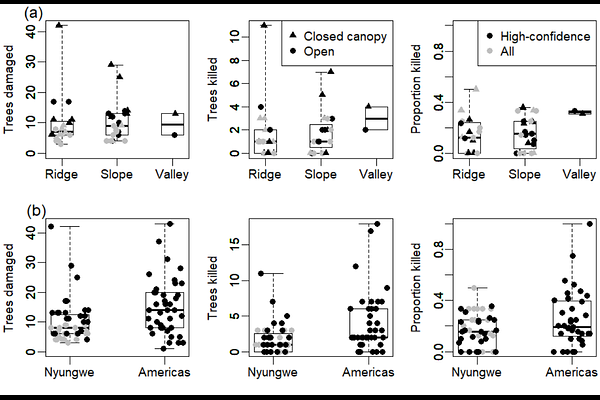Lightning-caused disturbance frequency and severity varies with topography in an Afromontane forest

Lightning-caused disturbance frequency and severity varies with topography in an Afromontane forest
Gora, E.; Ngute, A. S. K.; Batumike, R.; Cuni-Sanchez, A.; Imani, G.; Kaplin, B.; Bantlin, D.; Bitariho, R.; Zoletto, B.; Petridis, N.; Sheil, D.; Sullivan, M. J. P.
AbstractLightning is an important agent of tropical tree mortality, but we know little about lightning-caused disturbances beyond one lowland tropical forest in Panama. Here we quantified variation in the frequency and severity of visually-detectable lightning-caused disturbances across topography in the montane forests of Nyungwe National Park, Rwanda. This was the first systematic assessment of lightning-caused disturbance in Africa and a preliminary test of the hypothesis that forest tolerance to lightning is higher where lightning disturbances are more common. Lightning-caused disturbances were observed six-times more frequently on ridges than in valleys, but lightning-caused disturbances in valleys tended to cause more tree-level damage than those on ridges. Overall, lightning disturbances tended to kill a lower proportion of trees in this Afromontane forest than in previously documented lightning disturbances in tropical America. We also observed less tree-level damage to Syzygium spp.(Myrtaceae) compared to the community-wide average, providing support for taxonomic differences in lightning tolerance. Our results indicate that lightning disturbance severity differs within and among sites, mediated in part by differences in lightning tolerance among tree species, and provide some support for the hypothesis that disturbance severity declines with disturbance frequency.